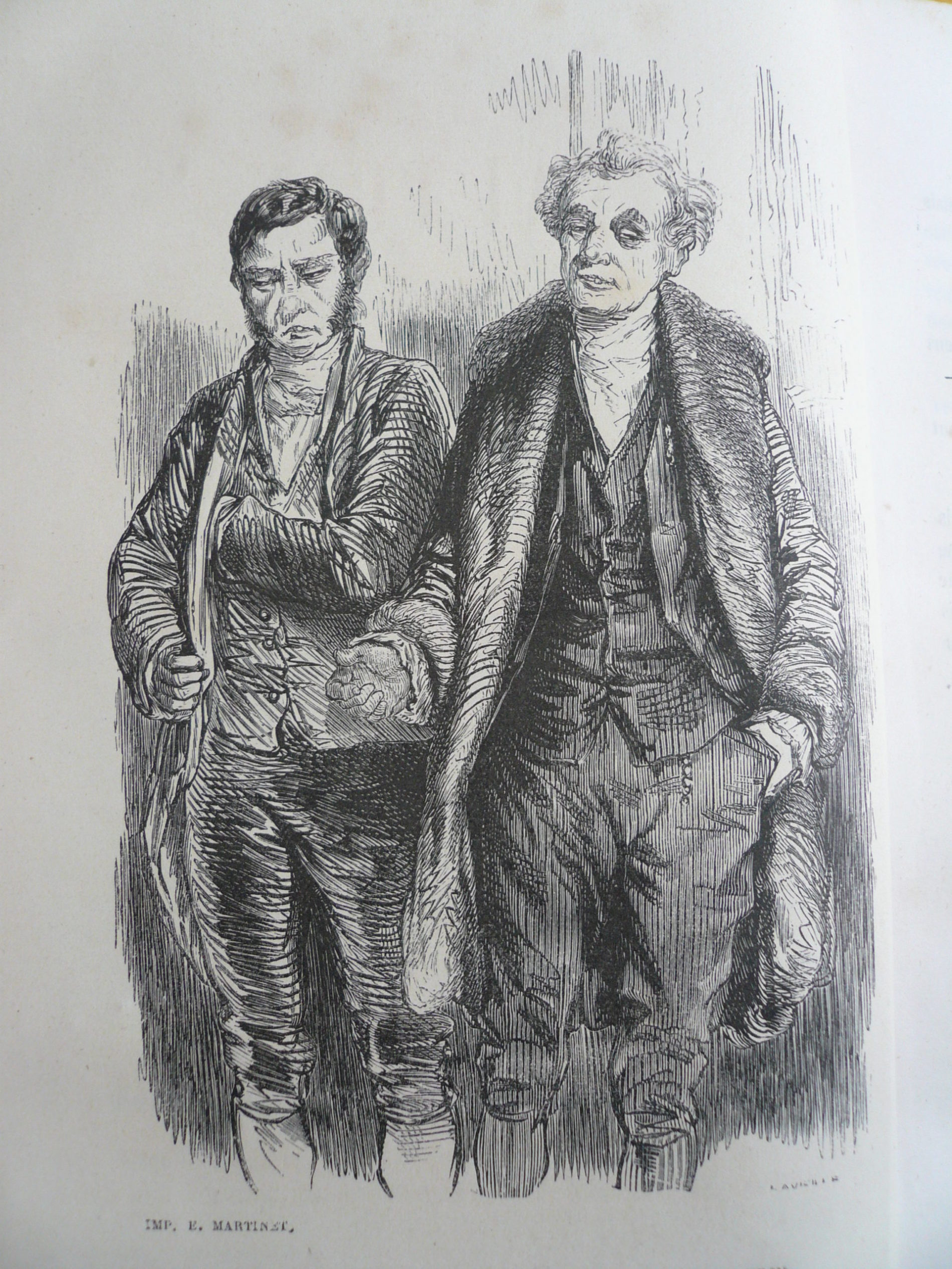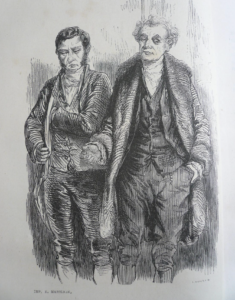
Vautrin
THEATER BY HONORÉ DE BALZAC
XIXth volume of works of Honoré de Balzac edited by widow André Houssiaux, publisher, Hebert and Co, successors, 7 rue Perronet – Paris (1877)
VAUTRIN 
Drama in five acts Vautrin is a play by Honoré de Balzac, first performed at the Porte Saint-Martin theater on March 14, 1840, and banned the following day. Frédérick Lemaître, the actor who was to play the role of Vautrin, had the idea of disguising himself to resemble Eugène-François Vidocq, from whom Balzac would have drawn inspiration for his character. There was also a strong resemblance to King Louis-Philippe 1st, which led to the play being banned. “Monsieur Honoré de Balzac (…) aspired to be a great theater playwright. He created for the stage a type whose boldness provoked fierce controversy, noise and scandal: Vautrin, the philosophical convict who did good in his own way. ” Antony Méray praised him in Le Siècle on April 20 and May 7 of the same year. However, Balzac’s talent as a dramatist was recognized later. The play was revived many times in the 20th and 21st centuries, notably by the Théâtre du Campagnol in 1987.
Analysis It’s difficult for the author of a play to put himself back fifty days in the situation he was in the day after the first performance of his work; but now it’s all the more difficult to write the preface to VautrinThe author’s would infallibly be inferior to so many divergent thoughts. A cannon shot is never as good as a firework display. Does the author explain his work? But it could only have been commented on by Frédérick Lemaître. Would he complain about the defense stopping the performance of his drama? But he would know neither his time nor his country. Arbitrariness is the cardinal sin of constitutional governments; it’s their own infidelity; and besides, doesn’t he know that there’s nothing crueler than the weak? This government, like children, is allowed to do everything except what’s right, and most of it. Will he prove that Vautrin is as much an innocent drama as a Berquin play? But wouldn’t dealing with the question of the morality or immorality of theater be putting ourselves below the Prudhommes who make it a question? Is he attacking journalism? But he can only congratulate him on having justified by his conduct, in this instance, everything he has said elsewhere. However, in the midst of this disaster, which the government’s energy caused, but which, it is said, a barber’s iron could have repaired, the author found some compensation in the proofs of interest he was given. Of all people, Mr. Victor Hugo was as helpful as he is a great poet; and the author is all the happier to publish how obliging he was, as Mr. Hugo’s enemies make no mistake in slandering his character. Finally, Vautrin is almost two months old, and in the Paris hothouse, a two-month-old novelty takes two centuries. The true and best preface to Vautrin will therefore be the drama of Richard-cœur-d’éponge (1), which the administration allows to be performed, so as not to let the rats occupy exclusively the so fertile boards of the Porte-Saint-Martin theater. Paris, May1, 1840.
The Story The duchesse de Montsorel had her child stolen from her at birth by her husband, the duke, who considered it a child of sin, having been born seven months after her marriage. The duchess believes she has found this child in Raoul, raised by her protector Vautrin. The latter, wishing to give his orphan a good match and also to enrich himself, gives him a title and honors that the latter does not have, so that he can marry Ines, daughter of the Duchess of Cristoval. Ines is attracted to Raoul, but her mother, the duchess, suspects a trap. After a series of twists and turns, Raoul’s imposture led him to be recognized as the legitimate son of the duchess and the duc de Montsorel. There’s nothing to stop him marrying Ines de Cristoval.
1) Source analysis/history: Preface and history compiled from the full text of the Comédie Humaine works Humaine published by France Loisirs 1986, under the auspices of the Société des Amis d’Honoré de Balzac.
2) Additional notes: Wikipedia universal encyclopedia.
No Comments